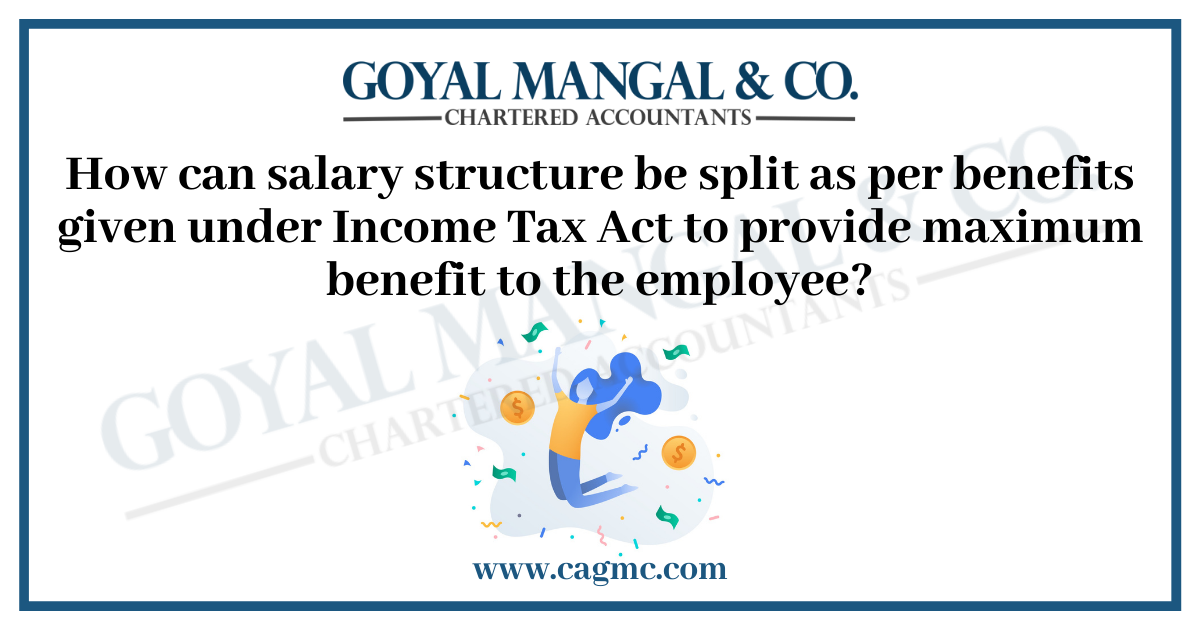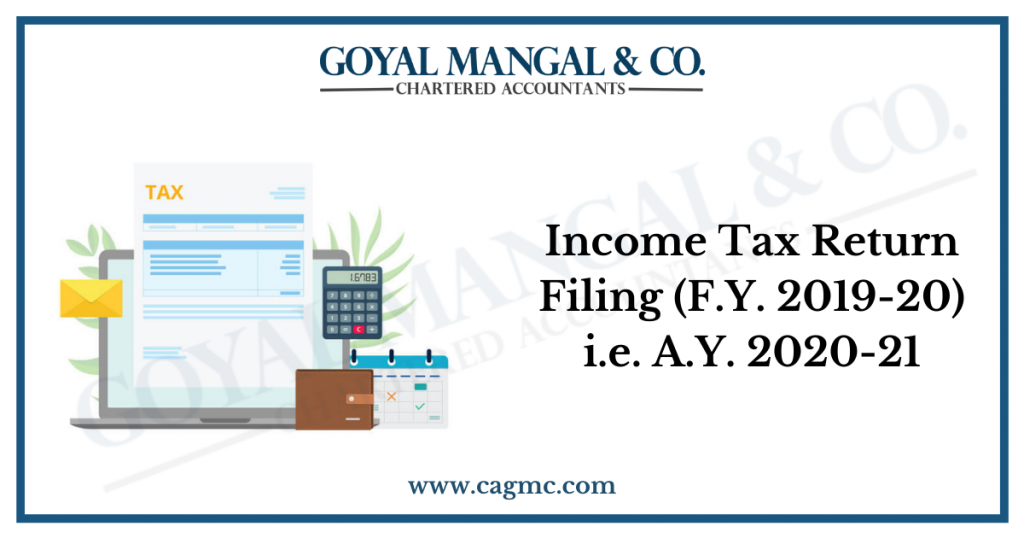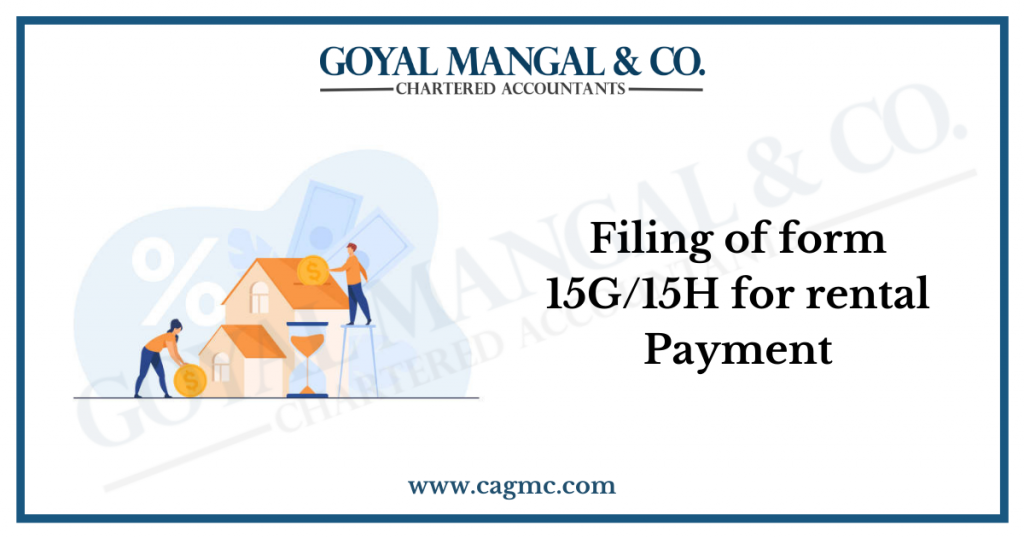
As date of filing income tax return is approaching, there is a conscious thought in everybody’s mind that how to take maximum benefit of the provisions of Income Tax Act, so as to minimize tax liability for the AY 2021-2022. At present, the qualified youth of the country is mostly employed in service sector due to increasing trend of MNC’s, industries and several other employment opportunities. In this article, we will discuss about salary structure split as per Income Tax Act to optimize our income and minimize tax thereon.
| Table of Content: |
What my salary consists of?
At the end of the month, we all receive our salary slip, in which salary structure can be split into many components like Basic Salary, Dearness Allowance, House Rent Allowance, Transport Allowance and then deductions like PF deduction, TDS deduction etc. and balance is take home pay.
Let us understand these components:-
- Basic Salary– This is the fixed component of the salary. This the basis of computation of various other things like PF contribution, HRA, Gratuity etc.
- Dearness Allowance- This allowance is mostly given by government undertakings; it is linked to consumer inflation index and is calculated as a percentage on basic salary.
- House Rent Allowance-This is paid in lieu of rent paid by the employee. The deduction available against HRA will be discussed in later part of the article.
- Employee Provident Fund- This is a social security scheme, where employer and employee both contribute to the fund and annual interest accruals are also credited to the account by EPFO.
- Leave Travel Allowance-This allowance is given for any trips taken by employee during the year and is given on the basis of actual expenses incurred. It is generally a part of the CTC, i.e. even if it is not claimed by the employee, it will be paid by employer at the end of the year after deduction of necessary tax.
- Bonus- This is the performance incentive popularly called as variable part of the salary. This is a fully taxable allowance.
These are the major components of the salary, other than this there can be other allowances like several reimbursements, rent free accommodation perquisite, children education allowance etc.
What is my taxable income?
The taxable income under the head salary income will be calculated as follows:-
| Particulars | Amount |
| Gross Salary | XXXX |
| Less: Exemptions (e.g. Professional Tax) | XXXX |
| Less: Standard Deduction (i.e. 50,000/-) | XXXX |
| Gross Total Income | XXXX |
| Less: Deductions Under Chapter VI | (XXX) |
| Total Income (i.e. Taxable income) | XXXX |
Gross salary constitutes all the salary components as mentioned above and any other type of allowances, perquisites given by the employer to the employee.
Knowing various Exemptions and Deductions available
From the above discussion, it is clear that Exemptions and Deductions are two different terms and should not be used interchangeably. The documents regarding these can be given to employer so that TDS is deducted after reducing exemptions and deductions. However, if some details are missed out, the same can be claimed at the time of filing return and we can get refund for that amount.
- Exemptions means the component which will not form part of the Gross Total Income itself.
- Deduction on the other hand means components which are reduced from Gross Total income to arrive at Total Income.
Now we will discuss both one by one
Exemptions
The various exemptions available under the head salaries are as under:-
- House Rent Allowance- HRA exemption will be the least of following: –
- Actual HRA received, or
- 50% (Basic Salary+ DA) for metro cities/ 40% (Basic Salary +DA) for non-metro cities, or
- Actual Rent paid- 10% of ( Basic +DA)
- Leave Travel Allowance- Leave travel allowance can be claimed by employee twice in a block of 4 years. The allowance is limited to the extent of travel tickets, the medium for which should be air travel, railways or any public transport.
- It is applicable only for domestic travel
- No other cost like lodging and food etc. is allowed.
- Amount of exemption will be on the basis of actual expenses incurred.
- Reimbursements- Any kind of reimbursements like for mobile bill, meal coupons, newspaper or periodicals re-imbursement etc. are all exempt in hands of employee
- Children Education and Hostel Allowance- The exemption to the extent of Rs.100/- p.m. and Rs.300/- p.m. is available in the name of Children Education and Hostel Allowance. The total exemption that can be claimed is (Rs.100 + Rs.300) X12, i.e. Rs.9, 600/-.
Deductions
The various deductions available are as follows:-
- Deduction can be claimed for the amount paid or deposited towards (Sec.80C)
- Life insurance premium,
- Contribution to any EPF, RPF, Approved Superannuation fund, PPF.
- Contribution to deferred annuity plan,
- Subscription to National Savings Certificates,
- Tuition fees,
- Principal repayment on home loans
- Sukanya Samridhhi Account
- Contribution towards annuity plan of any insurer to receive pension (Sec.80CCC)
- Contribution towards Pension Schemes of Central Government (Sec.80 CCD)
- The amount should not exceed 10% of salary
- Additional deduction of Rs.50, 000/- also allowed.
For all above mentioned sections aggregate deduction available is Rs.1, 50,000/- and additional Rs.50, 000/- for contribution to government pension funds if that amount is not claimed in limit of Rs.1, 50,000/- already.
- Deduction for Health Insurance Premium (Sec.80D)
For Self and Family Up to Rs.25,000 (Rs.50, 000/- if self and family include senior citizen)
For Parents (Senior Citizen) Up to Rs.50000/- Medical Expenses Up to Rs.50000/- (If no health insurance policy for that person.)
The amount of deduction for preventive health checkup will be Rs.5000/- per year.
- Deduction for Higher Education Loan (Sec.80E)
- Interest on loan taken for higher studies for family (self, family and spouse). The deduction can be claimed by guardian also.
- This deduction can be claimed for studies being pursued in India or abroad.
- Interest on Home Loan
- Interest on home loan can be claimed under Sec.24, i.e. House Property to the extent of Rs.2, 00,000/- . If property is let out, entire interest can be claimed.
- Under Sec.80EE, additional Rs.50, 000/- can be claimed if the conditions therein are satisfied. (Loan up to Rs.35 lakhs, Value of property up to Rs.50 lakh, no other property in name of individual).
- Under Sec 80EEA, Rs. 1, 50,000/- is announced for affordable housing purchased during 01.04.2019 to 31.03.2020, it is available only to first-home buyers.
- It may be noted that out of benefits under Sec.80EE and Sec.80EEA only one can be availed.
- Deductions in respect of Donations (Sec.80G)-
The deduction is available as per specified limits for donation given to charitable institutions or specified fund. - Deductions in respect of interest on Savings Bank Account (Sec.80TTA)
The income earned from deposits in savings bank account is deductible up to an amount of Rs.10, 000/-
Other benefits available
- Relief under Sec.89 (1) – In case individual has received or earned any arrears of salary during current year, then he can avail the relief under Sec.89 (1). This is to compensate the fact that income in current year will increase significantly and will be leviable to more tax rate, however if same was received in respective years, what would have been the tax implications.
- Rebate under Sec.87A- In case of resident individual, if the total income is less than Rs.5, 00,000/- then rebate under this section will be available to the extent of income tax payable or Rs.12, 500/- whichever is less.
- Standard Deduction- Standard deduction of Rs.50, 000/- will be given to salaried class individuals, and reduced from salary itself.
New Tax Regime vs. Old Tax Regime
Under the old tax structure the income is computed after all exemptions/ deductions. After the income is computed the tax is calculated as per following slab rates.
a) For individual residents aged less than 60 years
| S.no | Income | Tax Rates |
| 1 | Up to ₹2,50,000 | Nil |
| 2 | Between ₹2,50,001 – ₹5,00,000 | 5% |
| 3 | Between ₹5,00,001 – ₹10,00,000 | 20% |
| 4 | Above ₹10,00,000 | 30% |
b) For Individuals aged between 60 years to 80 years
| S.no | Income | Tax Rates |
| 1 | Up to ₹3,00,000 | Nil |
| 2 | Between ₹3,00,001 – ₹5,00,000 | 5% |
| 3 | Between ₹5,00,001 – ₹10,00,000 | 20% |
| 4 | Above ₹10,00,000 | 30% |
c) For Individuals aged above 80 years
| S.no | Income | Tax Rates |
| 1 | Up to ₹5,00,000 | Nil |
| 2 | Between ₹5,00,001 – ₹10,00,000 | 20% |
| 3 | Above ₹10,00,000 | 30% |
Under New Tax Regime u/s 115BAC, government has focused to bring flexibility in the hands of tax payers. Earlier, for claiming deductions and to save tax people were bound to invest in tax saving products. However, now people have got an option that tax can be paid at lower rates without claiming any deductions.
Following deductions (actually, almost all that we discussed above) will not be available under new tax regime:-
- Certain allowances u/s section 10 (LTA, HRA, allowances granted to meet expenses in performance of duties of office,
- Allowances granted to meet personal expenses in performance of duties of office,
- Deduction’s u/s 16 (Standard Deduction, Entertainment allowance and Professional tax)
- Interest payable on borrowed capital for self-occupied property.
- Standard Deduction in case of family pension
- Chapter VIA Deduction (life insurance, health insurance premium, pension funds, provident fund, donation etc. except Contribution made by employer to notified pension scheme u/s 80CCD (2))
The tax rates in new tax regime our as follows: –
| S.no | Income | Tax Rates |
| 1 | Up to ₹2,50,000 | Nil |
| 2 | Between ₹2,50,001 – ₹5,00,000 | 5% |
| 3 | Between ₹5,00,001 – ₹7,50,000 | 10% |
| 4 | Between ₹7,50,001 –₹10,00,000 | 15% |
| 5 | Between ₹10,00,001 –₹12,50,000 | 20% |
| 6 | Between ₹12,50,001 –₹15,00,000 | 25% |
| 7 | Above ₹15,00,000 | 30% |
Taxability of Retirement Benefits
- Pension: – Pension (not family pension) is taxable just like salary.
- Gratuity amount received on death/ retirement/ resignation will be exempt. The upper limit in the calculation criteria has been increased to Rs.20 lakhs recently
- Leave Encashment- If given by Central/ State Government then fully exempt. If given by other employer, then exemption up to Rs.3 lakhs.
- Commuted Pension- The amount received on account of Commuted Pension is exempt.
Conclusion
To conclude it can be said that salary structure can be split as discussed above, to avail maximum benefits under Income Tax Act. Exemptions like LTC, HRA should be definitely taken as per applicable rules. With regards to new and old tax structure it can be said that if you have certain investments/ medical or insurance policies/ ongoing home loan etc., they we should continue in old structure. However, if somebody is not having such commitments then for them new tax rates will be beneficial as the tax rates are lower in that.


